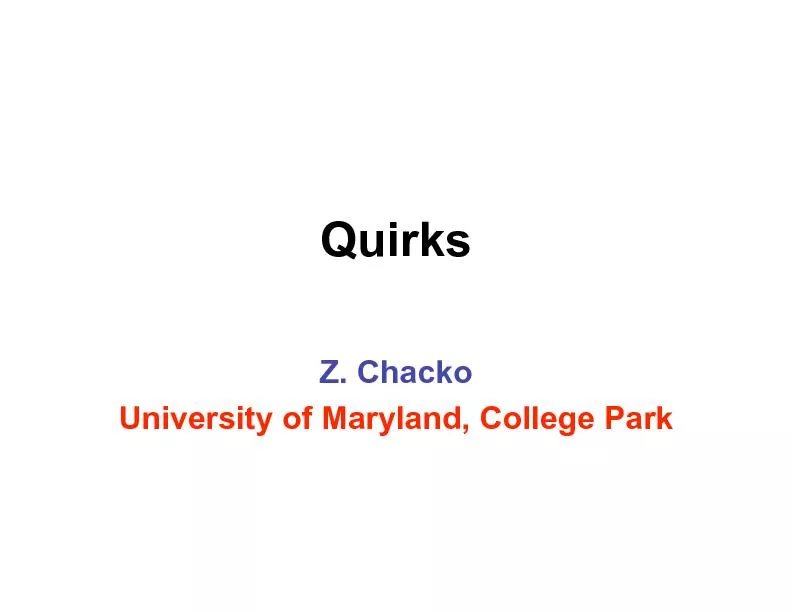/


th An opportunity to study string theory in the lab A very simple concrete framework that leads to highly unusual collider signals These signatures may be relevant to other models as well ID: 408561
Download Pdf The PPT/PDF document "vertices. Luty, Kang and Nasri (2006) h..." is the property of its rightful owner. Permission is granted to download and print the materials on this web site for personal, non-commercial use only, and to display it on your personal computer provided you do not modify the materials and that you retain all copyright notices contained in the materials. By downloading content from our website, you accept the terms of this agreement.
vertices. Luty, Kang and Nasri (2006) have been studying this class of theories, and their implications for the LHC. Were first to seriously consider the phenomenology of long strings. Came up with the name quirks. Burdman, Z.C., Goh and Harnik (2006) found that scalar quirks arisenaturally in the context of `folded supersymmetryÕ, a new class ofmodels for electroweak symmetry breaki th An opportunity to study string theory in the lab! A very simple, concrete framework that leads to highly unusual collider signals. These signatures may be relevant to other models as well. ¥ Theories with multiple non-Abelian gauge groups, with matter charged under more than one gauge group, often arise in the low energy limit of string theory.¥ Quirks are a characteristic feature of some new models of electroweak symmetry breaking.In theories with quirks it is possible to generate Higgs masses much larger than the MSSM upper bound, if Higgs has Yukawa couplings to the quirks. The hiddencolor group allows these couplings to be large. Babu, Gogolad & Standard Model hadrons (if the quirks are colored)¥ .In the case of scalar quirks, because of the renormalizablecouplings to the Higgs, decays to Standard Model fermions may be preferred. For ! � 20 G to MeV range, the string length is of order a mmor less. If energy loss is somewhat inefficient, the quirk lifetime could be long enough that a quirk pair could enter the detector as a single unit. These would ionize very differently from the familiar SM particles, since the oscillations of the quirks mean that their true trajectories aremuch longer than would be apparent from the ( th two hidden sector glueballs soft hadron showers